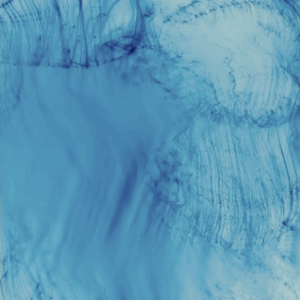JTF (just the facts): A total of 35 color and black-and-white photographs, generally framed in black and unmatted, and hung against white walls in the three main rooms of the gallery, and in the office, transition, and viewing room areas.
The following works are on view:
- 8 archival pigment prints, 2015-ongoing, sized 60×40 inches (or the reverse), in editions of 7+1AP
- 7 archival pigment prints, 2015-ongoing, sized 42×28 inches (or the reverse), in editions of 7+1AP
- 18 archival pigment prints, 2015-ongoing, sized 24×16 inches (or the reverse), in editions of 7+1AP
with Rajesh Vangad
- 2 acrylic paint on archival pigment print, 2021, sized 42×62 (or the reverse)
(Installation shots below.)
Comments/Context: The everyday scenes from rural India that form the backdrop to Gauri Gill’s ongoing series Acts of Appearance could hardly be more mundane. Women collect water from a well, visit the local market, and carry bundles of straw on their heads. Shopkeepers attend to customers, or linger in doorways waiting for the next potential sale. People sit at the bus stop, chat with friends in modest cafes, or play cricket on dusty pitches. There is both farm and office work to do, and motorcycles and satellite dishes offer evidence of the small intrusions of modernity into quiet village life. Gill’s color photographs are slow and deliberate, allowing the universal rhythms and predictable contours of rural life to emerge.
But these mundane realities are playfully upended in Gill’s photographs by the head-covering masks that her subjects wear. Inspired by annual mask festivals where stories from Hindu epics and tribal myths are enacted by people from the local communities, Gill collaborated with two leading mask makers (and more than thirty artists and volunteers) to develop a new set of masks for her project. The masks partially transform her subjects, enveloping their heads with the heads of colorful animals and insects, everyday objects, and blank-faced people. The resulting masked photographs have a quality of magical realism, where ordinary village activities are infused with performative fairy tale oddity.
Gill began Acts of Appearance in 2014, and earlier images from the series were shown at MoMA PS1 in 2018 (reviewed here); the works on view here are all more recent, giving us an update on the evolution of the project. The most perplexingly surreal of Gill’s new setups are those that introduce a dose of modern technology. In one image, a woman in a doorway poses with her extra large camera head, her hands holding the camera as if she was inverting the gaze and making a picture of us. In another, a man lounges on the steps of a painted entryway, his transistor radio head tilted to the side with relaxed style. And a person with a smiling clock face head jauntily leans out the window of a truck, as if laughing at the strangeness of time itself.
This eerie playfulness takes on a more naturalistic tone when the masks are animals and insects. Some sorcery seems to have occurred when a person with a goat or donkey head is driving a truck filled with plastic water barrels or working at a computer in an office. The man with a water buffalo head seems well suited to his task of tending the nearby water buffaloes, but the two women cutting vegetables on the floor have inexplicably become insects, as has one of the men sitting at a table and the cricket batsman in other pictures. Reptile heads adorn a man on a motorcycle, a woman reading, and another woman driving a truck. All of these extraordinary transformations seem to have occurred in the middle of everyday routines, with those that have been changed hardly noticing the difference. The active collaboration of the villagers is clearly part of Gill’s successful formula, as it is their deadpan playacting that makes the inversions of identity all the more unexpected and magical.
The show also includes a few larger black-and-white photographs from Gill’s Field of Sight series, which have been overpainted with intricate folk art imagery. Working in collaboration with painter Rajesh Vangad since 2013, Gill has made photographs of Vangad standing as a lone figure in front of village landscapes, which he has then hand inscribed with seas of additional elements, from both ancient Warli folk drawings and more modern sources. In The Great Pandemic, Vangad stands in a marshy area surrounded by water, and his overpainting adds an elaborate dance of Covid symbols and references, from the central virus floating in the sky like the sun to repetitions of geometric figures lying in beds and attached to oxygen tanks. While the underlying photographs are moody and meditative, Vangad’s inscriptions are densely exuberant, covering the scenes from edge to edge in rhythmic energy.
Gill’s willingness to embrace collaboration as an artistic strategy sets her work apart from most contemporary photographers, and gives it an engaging intimacy. Instead of standing apart from her subjects, she overtly brings them into the process, breaking down the typical wall between photographer and sitter, and allowing alternate flows of creativity and improvised participation to emerge. Her expressively fantastical results are a testament to the power of her interactions, drawing the viewer into flights of fancy embedded in the everyday.
Collector’s POV: The works in this show are priced as follows. The color prints by Gill are $6500, $10000, or $15000 each, based on size, while the collaborations with Rajesh Vangad are $30000 each. Gill’s work has little consistent secondary market history, so gallery retail likely remains the best option for those collectors interested in following up.
























